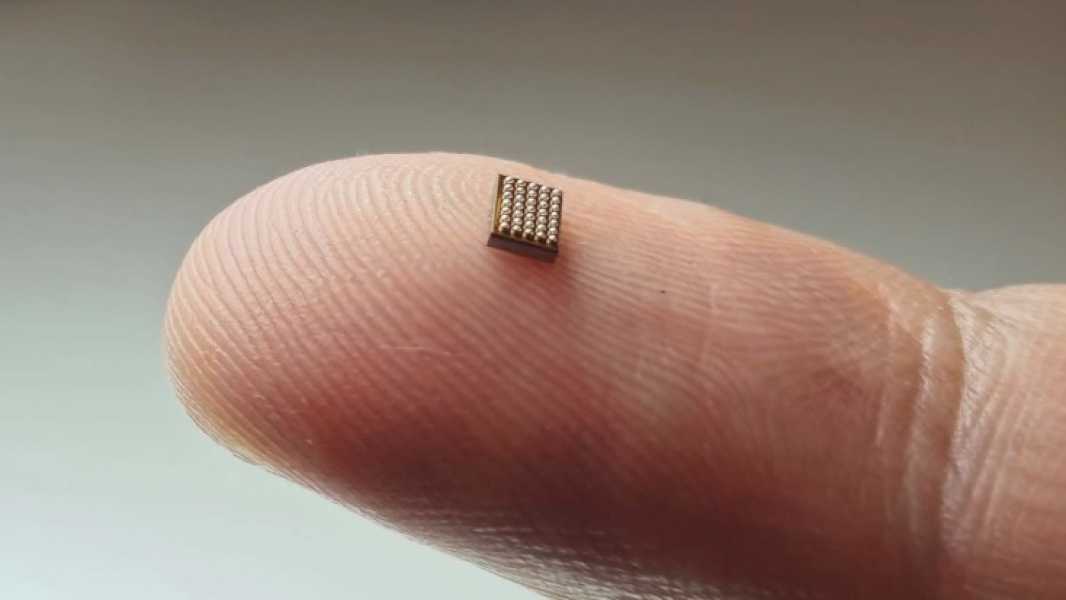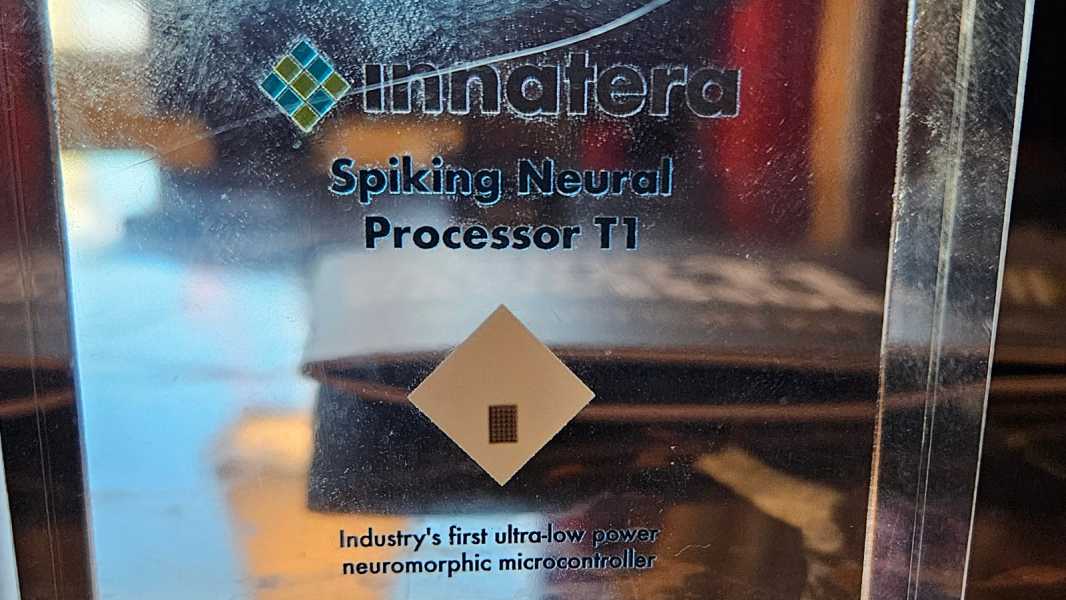
(Image credit: Innatera)
LAS VEGAS — The world’s first “neuromorphic chip” that could dramatically extend the battery life of smart devices will hit stores next year. The chip, which mimics the structure of the human brain, is designed to bring artificial intelligence (AI) capabilities to power-constrained devices.
Smart gadgets like light bulbs, doorbells and smoke alarms connected to Wi-Fi have sensors that detect threats and send the information to the cloud for processing.
However, the process requires a significant amount of energy, Sumit Kumar, CEO of processor company Innatera Nanosystems, told Live Science at CES 2025. Plus, any AI-powered data processing these devices do requires access to the internet.
However, the Spiking Neural Processor T1 has the potential to significantly reduce power consumption in future smart devices.
It works by analyzing sensor data in real time to identify patterns and potentially filter information coming from sensors without the need for an internet connection.
Brain Simulation
The device is a neuromorphic processor, meaning its structure is designed to mimic the way the human brain recognizes patterns. To put it another way, when you sense something, be it a smell or a sound, different groups of neurons are activated to identify it.
Similarly, on the chip, different groups of artificial neurons record spikes. The basic concept is a spiking neural network (SNN), where the neural network is a set of machine learning algorithms, and the spikes it produces are analogous to the signals generated by brain cells.
SNN algorithms are also typically 100 times smaller in file size compared to conventional deep neural networks used in large language models.

The T1 chip can be applied to various smart home solutions such as detectors, alarms and sensors. Computing layers
The T1 chip has three key layers. The first is an SNN-based compute engine that captures power dissipation of less than 1 milliwatt and latency typically less than 1 millisecond for most applications, Kumar said. The second layer includes standard deep neural networks, and the third layer consists of a regular processor that manages the entire system.
The T1 chip or similar chips can increase battery life in some smart devices by up to six times, Kumar added. For example, a prototype smart doorbell using the T1 processor, which can detect the presence of a person using radar technology, lasted 18 to 20 hours, while a traditional Wi-Fi-based product lasted only
Sourse: www.livescience.com





